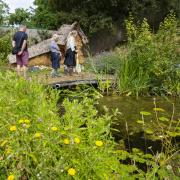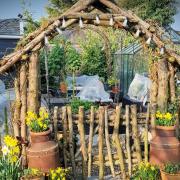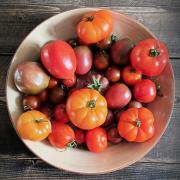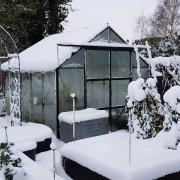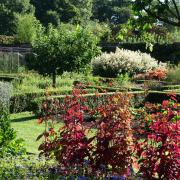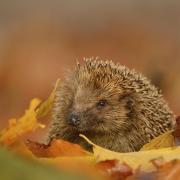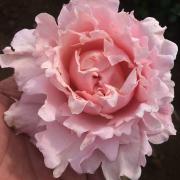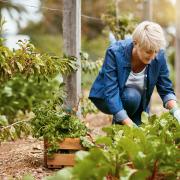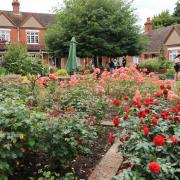May . . . the month of miracles

When you stop and think about it, the very fact that a single blade of grass exists is pretty miraculous, not to mention the swathes of flora and fauna that we are fortunate to share this planet with. And May is the month when all the growth in our gardens is new, fresh and very, very green. This will all change, of course, after the long and, hopefully, hot months that lie ahead, but for now the garden is in its annual adolescence, slightly awkward, occasionally argumentative, but filled with promise.
I will be away from my garden this month for over a week during the Chelsea Flower Show, but I suspect it will survive my absence. If you are at Chelsea this year do come and visit our Modern Slavery Garden (www.modernslaverygarden.com) and see the young oak saplings that come from good East Anglian stock.
I plan to go orchid hunting in our meadow when I get back from Chelsea. We have plenty of purple bee orchids and even some slightly more unusual white ones. Like the Snakeshead Fritillaries earlier in the year, orchids are one of those plants that look so exotic it seems a miracle that they are happy to grow here. Yet, they can be found right across our county, if you stop to look.
Toadflax worth celebrating
The various forms of the toadflax species (linaria) similarly induce in me this sense of the exotic. From the super colorful ones you can order from Sarah Raven (linaria maroccana ‘sweeties’) right down to the humble old butter-and-eggs plant (linaria vulgaris) that you might find on the verge of a road, and which look like miniature versions of their cultivated cousin the snapdragon. This year I am growing rather a lot of the snapdragon ‘royal bride’ that I included in my Thompson and Morgan order back in January. I am hoping to see a flower spike or two from these in May.
Another toadflax that is under appreciated is linaria purpurea ‘Canon Went’, which will be flowering this month. This plant needs no special attention and will help you out by seeding itself in all the little corners of your garden that need attention, but which you never get round to. It is a great little helper.
Many people feel that peonies have miracle value. I certainly like them, and I have a few, but I haven’t really caught the peony bug properly yet – I suspect it will come. Their window of flowering is short, but I suppose they are more to be savoured for that fact. I am more excited by my oriental poppies and I ought to be enjoying them by now.
Two new entrants to my garden that I am most excited to greet this May are the lilac standard (syringa vulgaris ‘Madame Lemoine’) I have in the centre of a new roundel I dug over the winter for summer bulbs, and the columnar cherry tree (Prunus ‘Amanogawa’).
Strawberry heaven?
A final note on strawberries. If you grow cultivated verities of strawberry – Honeoye, Cambridge Favourite, Florence, for example – as most of us do, they are quite frankly a pest. Firstly, around now you have to lay straw or an appropriate substitute under them so the fruits don’t sit on the soil and rot. Secondly, you have to remember how old the plants are because they tire after three or four years and need replacing, although new plants are easy enough to make from the runners they throw out. Thirdly, in order to get a long season you need to select early, mid and late cropping varieties (such as the ones noted above) and then remember where you have planted them. In short, there is a certain level of fuss if, like me, you wish to deliver a steady flow of punnets to feed several hungry young mouths.
None of these disadvantages apply to wild strawberries (Fragaria Vesca) also known as either ‘alpine’ or ‘woodland’ strawberries. These delicate little creatures are truly the gardener’s best friend. They don’t require the straw treatment as they fruit high up on their little bushes, they throw themselves around your garden, they fruit all through the season. Best of all, wild strawberries taste intense, as opposed to the somewhat ‘washed out’ flavor of some of their cultivated cousins.
Italians understand this completely. They even hold the ‘Fragoline di Bosco’ strawberry festival in and around Rome every May dedicated to this woodland wonder. The Romans consider the berry a speciality dish through May and June. With all these advantages, I often ask myself why I bother with the cultivated forms, and in the spring sometimes find myself edging towards the strawberry beds with murderous intent. Perhaps this year I will finally sweep away the cultivated varieties to make more room for their wild cousin.




